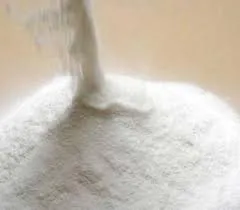
Dec . 21, 2024 20:07 Back to list
latex bonding agent
Understanding Latex Bonding Agents in Construction and Industry
Latex bonding agents are an essential component in various construction and industrial applications, making significant contributions to the efficacy and durability of materials used in building and renovation projects. These agents are primarily water-based adhesives that include latex polymers. Their unique properties make them invaluable in enhancing the adhesion and performance of different substrates, including concrete, wood, masonry, and drywall.
The primary function of latex bonding agents is to enhance the bond between different materials. When mixed with slurries of cement, plaster, or stucco, these agents improve the adhesion properties significantly. By creating a stronger bond, they ensure that materials adhere properly to surfaces, which is crucial in preventing water ingress, cracking, and other forms of damage that could arise from poor adhesion. This is particularly important in climates that experience heavy rainfall or freezing temperatures, as these conditions can exacerbate the challenges of material adhesion.
One of the standout features of latex bonding agents is their versatility. They can be used in a wide array of applications, from tile setting and floor installations to repairing concrete surfaces and creating decorative finishes. For instance, when setting tiles, latex bonding agents can be mixed with thin-set mortars to increase their flexibility and strength, allowing them to withstand the natural movements of structures over time. This flexibility is essential in preventing cracks and ensuring the longevity of installations.
Moreover, latex bonding agents are known for their excellent water resistance. After curing, they form a waterproof layer that protects the underlying materials. This property is particularly beneficial in construction scenarios involving wet environments, such as bathrooms, kitchens, and outdoor spaces where exposure to moisture can lead to deterioration. By incorporating latex bonding agents, builders can significantly extend the lifespan of their projects while also minimizing the need for repairs or replacements due to water damage.
latex bonding agent

In addition to their practical applications, latex bonding agents contribute to environmental sustainability
. Many of these agents are water-based and contain fewer volatile organic compounds (VOCs) compared to traditional solvent-based adhesives. This makes them a healthier option for both the environment and for individuals working with these materials. The reduced emission of harmful compounds not only protects air quality but also minimizes the ecological impact of construction and renovation activities.The application process for latex bonding agents is relatively straightforward, making them accessible to both professionals and DIY enthusiasts alike. They can typically be applied directly onto the surface requiring bonding or mixed into the materials being used. For best results, surfaces should be clean, dry, and free of contaminants before application. Once applied, most latex bonding agents dry clear, which is an attractive feature in visible applications where aesthetics matter.
Training and education around the use of latex bonding agents are increasingly important in the construction industry. As new formulations and technologies emerge, professionals must be aware of the different types available and their specific applications. Understanding how to choose the right latex bonding agent for a particular application can significantly affect the outcome of a project.
In summary, latex bonding agents play a crucial role in ensuring the integrity and durability of various materials used in construction and renovation. Their capacity to enhance adhesion, provide water resistance, and contribute to environmental sustainability makes them a preferred choice for many applications. As the construction industry continues to evolve, the importance of these versatile agents will only increase, highlighting the need for ongoing research and education to maximize their potential benefits.
In conclusion, whether in new construction or renovations, integrating latex bonding agents into building practices can lead to stronger, more resilient structures, reflecting the industry's commitment to quality and sustainability.
-
Versatile Hpmc Uses in Different Industries
NewsJun.19,2025
-
Redispersible Powder's Role in Enhancing Durability of Construction Products
NewsJun.19,2025
-
Hydroxyethyl Cellulose Applications Driving Green Industrial Processes
NewsJun.19,2025
-
Exploring Different Redispersible Polymer Powder
NewsJun.19,2025
-
Choosing the Right Mortar Bonding Agent
NewsJun.19,2025
-
Applications and Significance of China Hpmc in Modern Industries
NewsJun.19,2025







